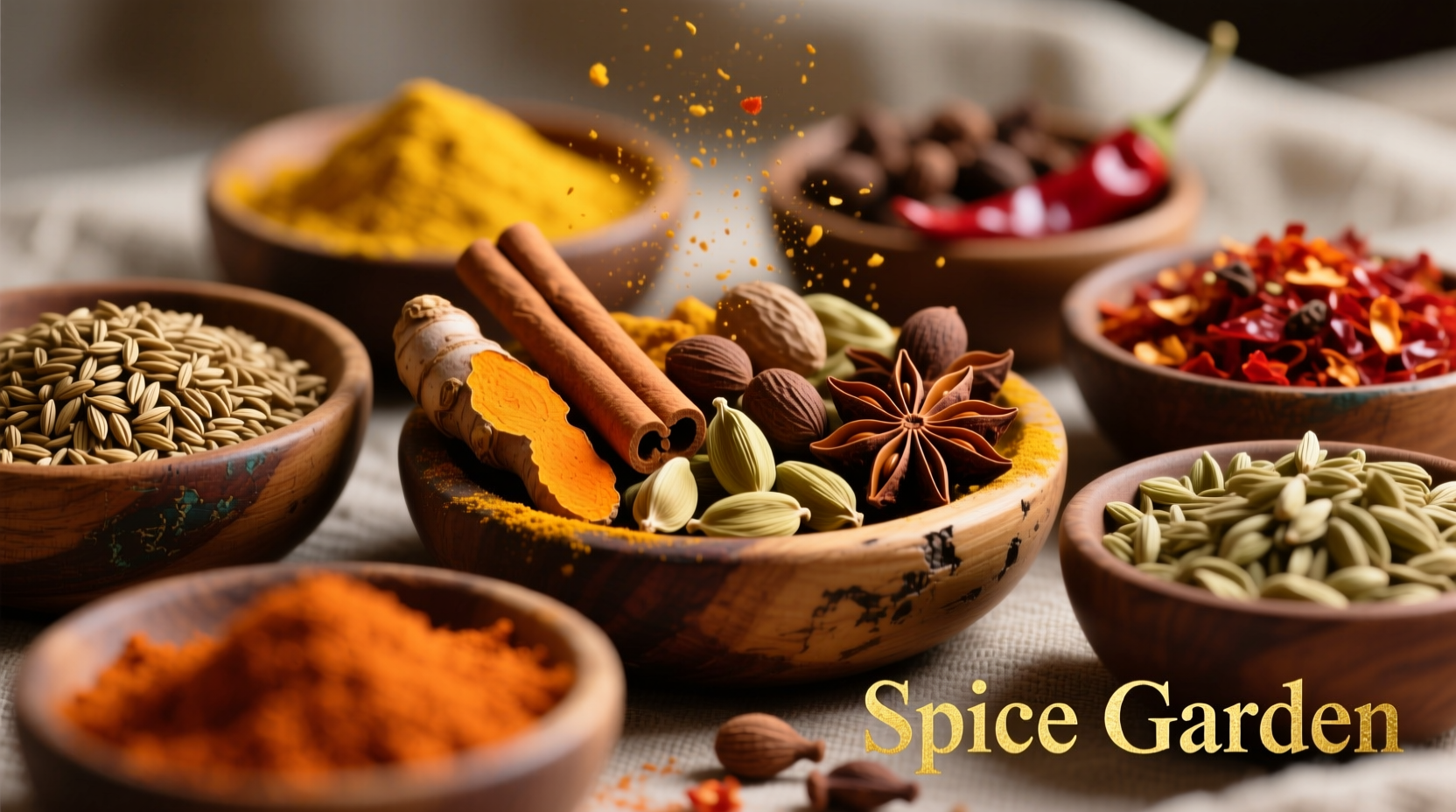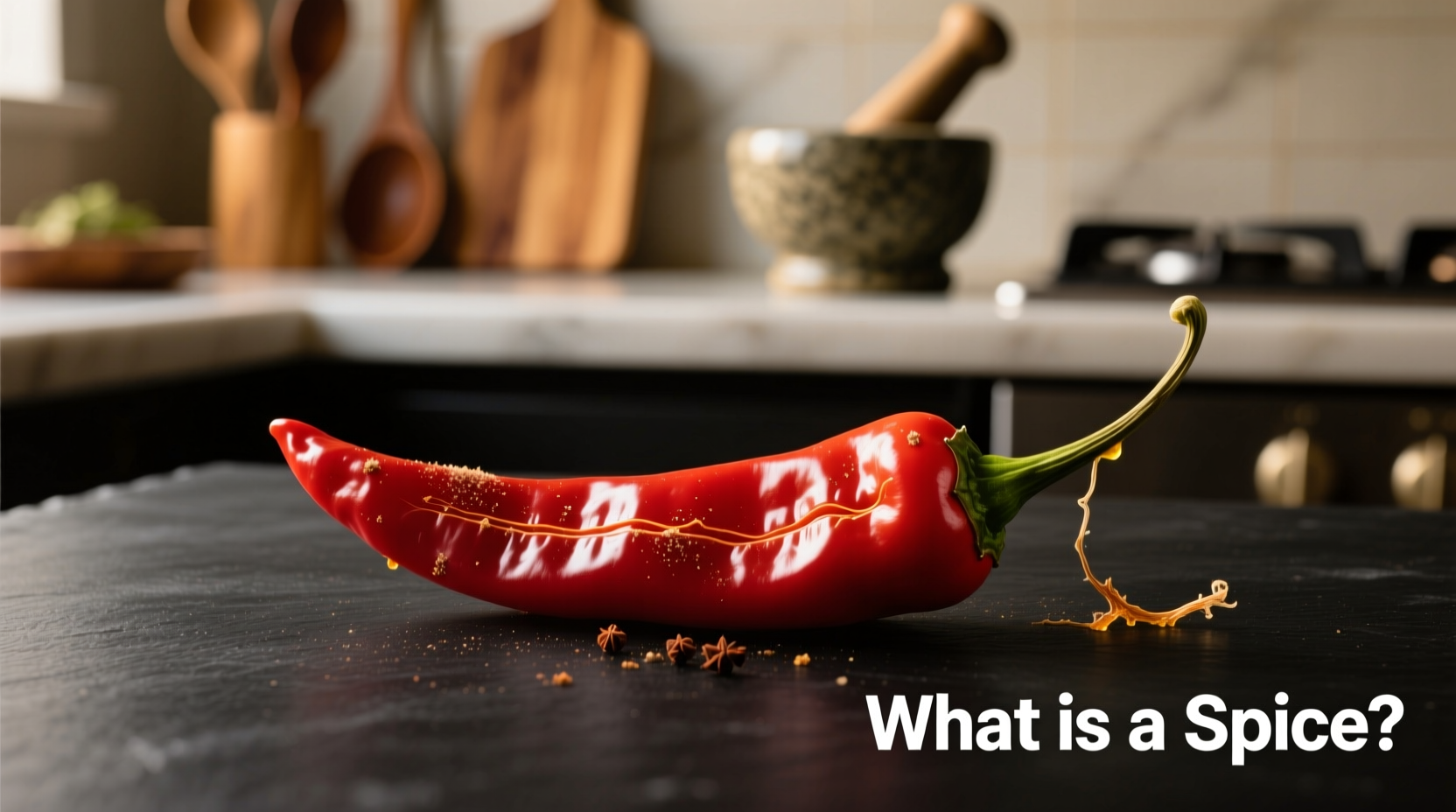By the time you finish reading this article, you'll understand exactly what qualifies as a spice, how they differ from herbs, where they originate, and why these small but mighty ingredients have shaped global history and cuisine for thousands of years. You'll also learn practical tips for identifying quality spices and incorporating them effectively in your cooking.
Defining Spices: Botanical Origins and Characteristics
Spices are concentrated flavor powerhouses that come from specific non-leafy parts of plants. Understanding what makes a spice a spice requires examining its botanical origins. Unlike herbs, which are typically the fresh or dried leaves of herbaceous plants, spices derive from other plant components that often require processing before use.
| Characteristic | Spices | Herbs |
|---|---|---|
| Plant Origin | Seeds, bark, roots, fruits, flower buds | Leafy parts of herbaceous plants |
| Flavor Intensity | Generally stronger, more concentrated | Milder, more delicate |
| Processing Required | Often dried, ground, or extracted | Typically used fresh or simply dried |
| Storage Life | Longer shelf life (1-4 years) | Shorter shelf life (months) |
| Climate Origin | Mostly tropical and subtropical regions | Temperate climate regions |
This botanical distinction explains why black pepper (from peppercorns), cinnamon (from tree bark), and ginger (from roots) qualify as spices, while basil, parsley, and mint are considered herbs. The USDA Agricultural Research Service confirms that spices contain higher concentrations of volatile oils, oleoresins, and other flavor compounds compared to herbs, contributing to their potent sensory impact.
Historical Journey: How Spices Shaped Human Civilization
Spices haven't just flavored our food—they've shaped world history. The spice trade created some of the earliest global commerce networks, connecting continents long before modern transportation. According to Smithsonian Institution research, evidence of spice use dates back to at least 2000 BCE, with cloves found in archaeological sites in Syria and black pepper traded along ancient Mesopotamian routes.
2000 BCE: Early spice trade routes established between Asia and Mesopotamia
1st Century CE: Roman Empire imports massive quantities of Indian spices through Red Sea routes
7th-8th Century: Arab traders dominate spice commerce, keeping sources secret
13th Century: Marco Polo documents spice production in Asia
15th-16th Century: European explorers seek direct sea routes to spice-producing regions
19th Century: Scientific understanding of spice botany develops
21st Century: Global spice market valued at over $13 billion annually (FAO data)
The quest for spices literally redrew world maps. Christopher Columbus's 1492 voyage was partly motivated by finding alternative routes to Asian spice markets, which inadvertently led to European contact with the Americas. The Dutch East India Company, formed primarily to control the spice trade, became the world's first multinational corporation.

What Qualifies as a Spice: Clear Boundaries
Not all flavorful plant substances qualify as spices. Understanding the boundaries helps avoid common misconceptions:
- True spices come from specific non-leafy plant parts: seeds (coriander, cumin), bark (cinnamon), roots (turmeric, ginger), fruits (allspice, chili peppers), flower buds (cloves)
- Herbs are leafy plant parts—even when dried (oregano, thyme, rosemary)
- Spice blends like curry powder or five-spice are combinations of individual spices
- Seasonings may include salt, sugar, or chemical additives—not considered true spices
- Essential oils are concentrated extracts, not whole spices
The American Botanical Council clarifies that for a substance to be considered a true spice, it must be derived directly from plant material without significant chemical alteration. This distinction matters because processing affects both flavor profile and potential health properties.
Common Spices and Their Botanical Origins
Understanding where your spices come from helps appreciate their unique characteristics. Here are some of the world's most common spices and their true botanical sources:
- Black Pepper: Dried fruit ("peppercorns") from the flowering vine Piper nigrum, native to South India
- Cinnamon: Inner bark of trees from the Cinnamomum genus, primarily grown in Sri Lanka and Indonesia
- Cloves: Aromatic flower buds from the Syzygium aromaticum tree, native to Indonesia's Maluku Islands
- Nutmeg: Seed of the Myristica fragrans tree, with mace coming from the seed's reddish aril
- Ginger: Rhizome (underground stem) of Zingiber officinale, likely originating in Southeast Asia
- Turmeric: Rhizome of Curcuma longa, part of the ginger family with origins in India
- Cumin: Dried seeds of Cuminum cyminum, an ancient crop from the Mediterranean and Southwest Asia
According to the Food and Agriculture Organization, India remains the world's largest producer and consumer of spices, accounting for nearly half of global production. However, specific spices dominate in particular regions—vanilla primarily from Madagascar, saffron from Iran, and cardamom from Guatemala.
Practical Guidance: Selecting and Using Quality Spices
Knowing what spices are is just the beginning—using them effectively transforms your cooking. Consider these practical tips:
Identifying Quality Spices
Freshness dramatically impacts spice quality. Whole spices maintain potency longer than ground versions. Look for:
- Bright, vibrant colors (dull appearance indicates age)
- Strong, distinctive aromas when crushed
- Dry texture without clumping (except for resinous spices like asafoetida)
- Purchase from retailers with high turnover to ensure freshness
Maximizing Flavor Impact
Different spices release flavors optimally through specific preparation methods:
- Toasting dry spices in a pan before grinding enhances complex flavor compounds
- Blooming spices in oil early in cooking distributes flavors evenly throughout dishes
- Adding delicate spices like saffron late in cooking preserves subtle notes
- Grinding whole spices just before use provides significantly more flavor than pre-ground versions
Research published in the Journal of Food Science demonstrates that proper spice handling can increase volatile compound retention by up to 40% compared to improper techniques, directly impacting the sensory experience of finished dishes.
Storage Best Practices
Protect your spice investment with proper storage:
- Store in airtight containers away from light, heat, and moisture
- Keep whole spices for 2-4 years; ground spices for 6 months to 2 years
- Refrigerate paprika and chili powders in humid climates to prevent spoilage
- Label containers with purchase dates to track freshness
Understanding what defines a spice goes beyond simple definition—it connects us to botanical science, global history, and practical culinary techniques that have evolved over millennia. By recognizing their true origins and characteristics, you can make more informed choices in your cooking and appreciate these remarkable ingredients with deeper understanding.











 浙公网安备
33010002000092号
浙公网安备
33010002000092号 浙B2-20120091-4
浙B2-20120091-4